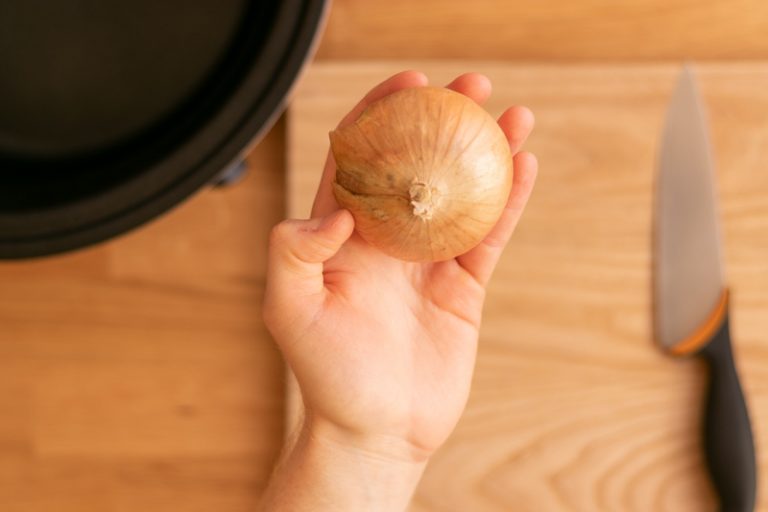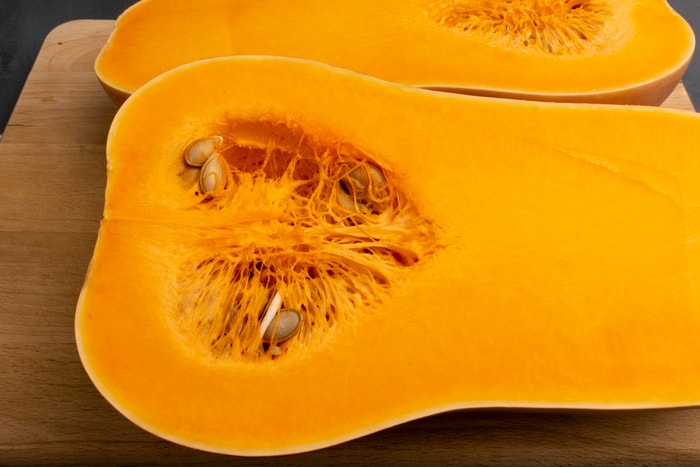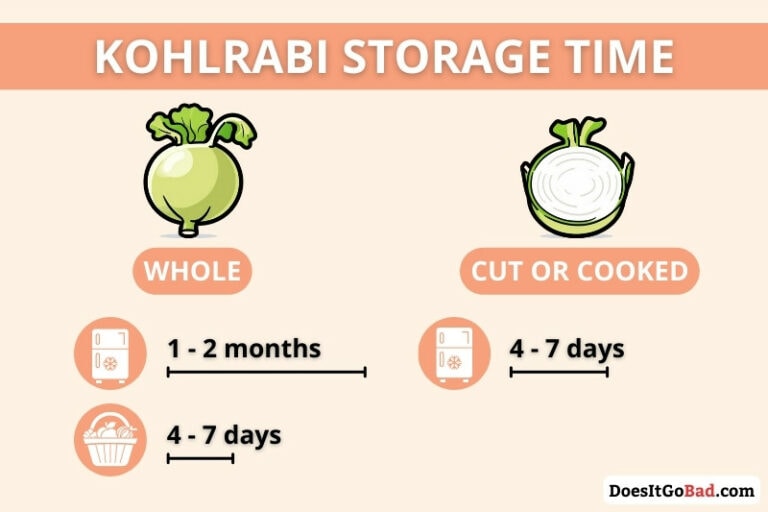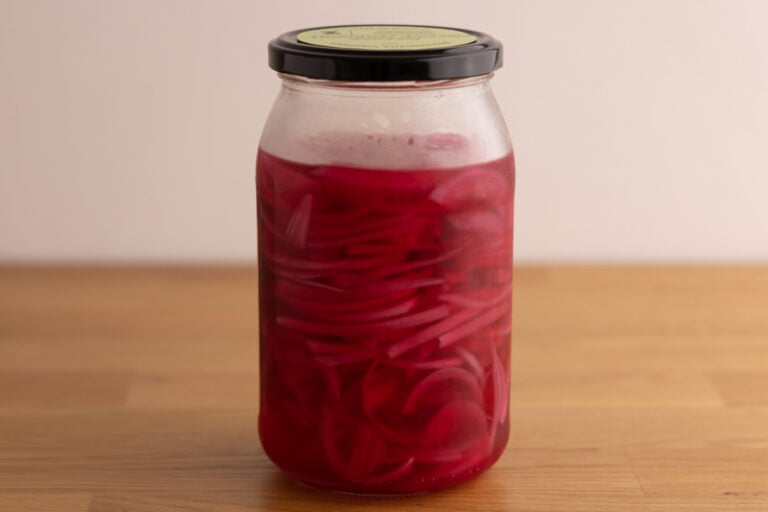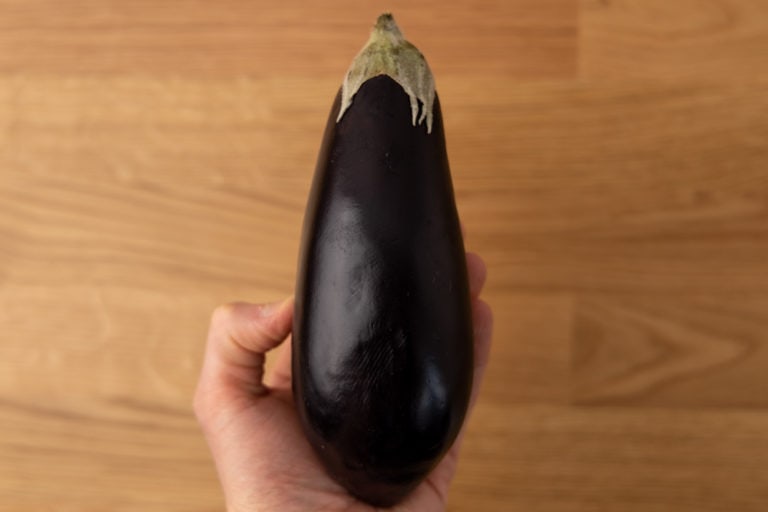How to Tell if Garlic Is Bad? [3 Signs of Spoilage]
Here’s all you need to know about the spoilage of garlic. Learn the spoilage signs for whole bulbs, individual cloves, and minced garlic.
So you’ve got a garlic bulb or a couple of garlic cloves stored for quite a while, and they look pretty iffy. And you want to know if you can still use them.
So, how do you tell if garlic is bad?
Let’s talk about the signs of garlic.
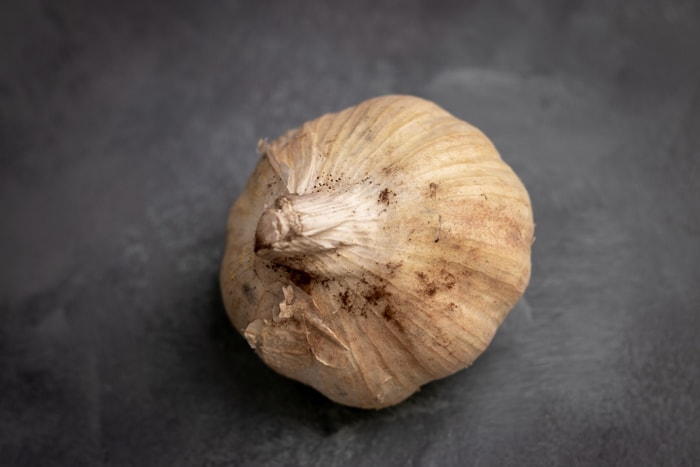
How to Tell if Garlic Is Bad?
Garlic is bad if it’s soft to the touch or feels hollow, has large dark spots or grows mold, or if it gives off a “funny” smell. Yellow garlic is old, and its quality isn’t that great, but you can still use it, and it’s the same with sprouting garlic.
That’s a high-level overview.
Next, let’s take a closer look at each one.
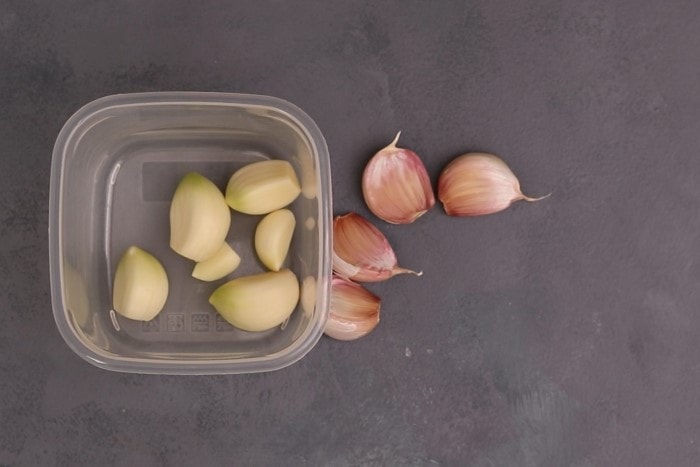
The Bulb or Clove Is Soft or Feels Hollow
If your garlic feels soft to the touch or as if it’s hollow, that’s a sure sign of water loss. So if a whole bulb or clove is squishy or even slimy, that garlic is gone.
But before you toss the whole bulb, remove individual cloves and give each one a check. Often, at least a couple of them will still be nice and (fairly) firm.
Unless, of course, your garlic is seeping water. That’s when you draw the line.
Also, a garlic clove that’s slightly on the softer side is still okay to use. If you’re going to process and cook it (which is usually the case), you’ll hardly notice much of a difference. It’ll be a bit more difficult to slice or press, but that’s about it.
(Similarly, frozen and thawed garlic cloves are soft, but work okay in cooking.)
Unfortunately, I cannot tell you exactly when garlic crosses the threshold of being too soft to use. That one is up to you to decide.
The easiest way to go about it is to ask yourself if you’re comfortable using it. If not, toss it.
It Smells Off
A whole bulb or even individual garlic cloves don’t have much aroma. Garlic’s signature pungent smell is noticeable only after cutting or pressing and even more so after cooking it for a few minutes.
(That’s why many recipes ask you to cook garlic until it’s “nice and fragrant.”)
That means you shouldn’t expect any strong smells coming from your garlic bulb or individual cloves before they’re cut.
Knowing that, it’s pretty clear that something is wrong if you notice that your garlic gives off a strong aroma. The smell that’s coming from it might be sour, moldy, musty, or anything else that you can describe as “funny.” And that’s when you toss the aromatic.
It’s Moldy or Has Dark Spots
Dark spots or mold on veggies are no good, and garlic isn’t an exception.
Of course, if your garlic clove has only a small dark spot, you can cut it off and use the rest. But if it’s large enough that you’d need to remove half of the clove or more, discard the whole thing.
What’s great about garlic is that each clove is individually wrapped and separated a bit from the rest. So even if one or two cloves are moldy or rotten, the rest might still be fine.
Obviously, if the whole bulb has some fuzzy patches of mold, you toss it.
Those are the typical signs of spoiled garlic. Next, let’s talk about what might seem concerning but is somewhat okay.
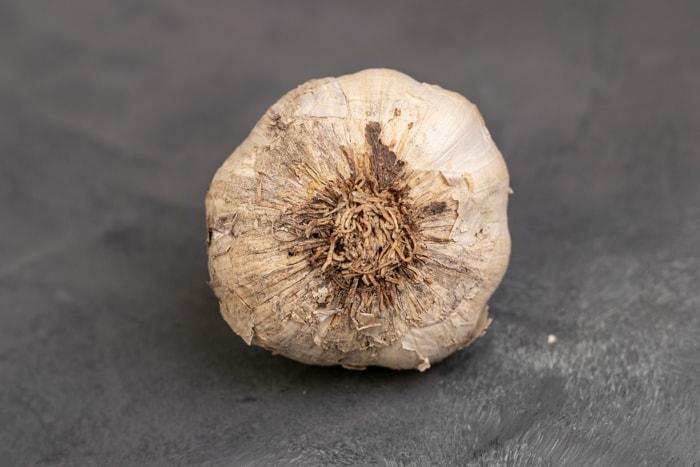
What’s Okay(ish)
Sprouting or yellowing garlic cloves are still okay to use. It’s okay to toss them if you’re going for the best possible quality, but unless you’re trying to impress someone with your cooking skills, you can use them.
Sprouting
If you store garlic long enough or decide to refrigerate it, it might start to sprout the same way potatoes and onions sprout. But while the quality of sprouting garlic clove isn’t as good as that of a fresh and firm one, it’s still okay to use it.
I usually simply cut off the shoot and use the rest of the clove, but if you want to be more thorough, cut the clove in half (top to bottom) and remove the green sprouting in the middle.
(Using sprouting onions is also okay, and the same is true for sprouting potatoes.)
Yellow Garlic Cloves
Fresh garlic cloves are white. There might be a faint yellow tinge, but they’re much closer to white than yellow.
Over time, that balance switches, and if your garlic clove is pretty yellow, it’s also quite old (here’s how long garlic lasts). That doesn’t mean it’s spoiled and that you have to toss it, but you can be sure that its quality will be noticeably worse than what you’re used to.
Because of that, you can toss those cloves, which is probably a good idea if they’re plain yellow. But if not, use them alongside fresh, white cloves in dishes that need at least a couple of cloves.
This way, the yellow ones will blend in (taste-wise), and chances are you won’t notice much difference in terms of flavor.
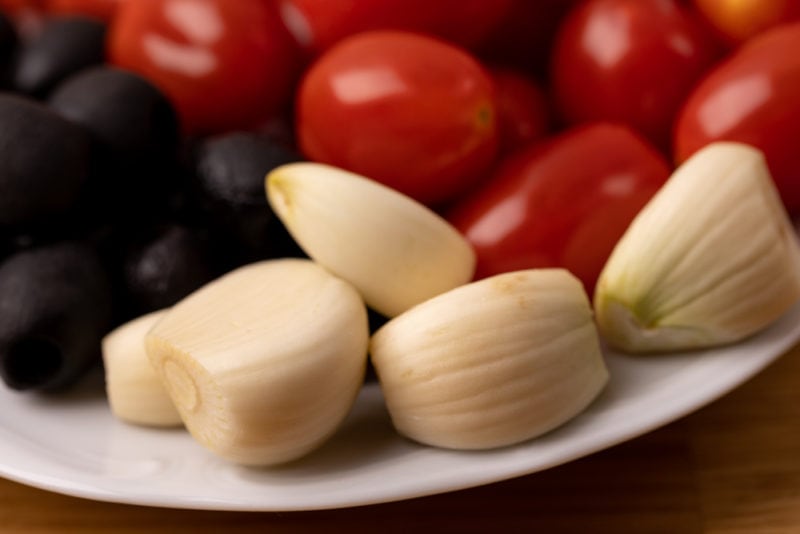
FAQ
How to Tell if Minced Garlic Is Bad?
Discard minced garlic if:
- There’s mold or any other organic growth on the surface. Any fuzzy mold or anything else growing on the surface means the stored garlic is no good.
- It changes color.
- It gives off a “funny” smell. Sour, moldy, musty, or any other off aroma means the minced garlic is no good.
- It’s tasteless or tastes off. Garlic is an aromatic that’s supposed to add flavor to whatever you’re cooking. If it can’t provide that, it’s no good.
- It’s stored for too long. Homemade minced garlic lasts for about a day and maybe a couple of days if you submerge it in water. After that time, it’s useless even if it doesn’t show any spoilage signs. For store-bought minced garlic, read the label and go from there.
How Do You Know if Peeled Garlic Is Spoiled?
Toss your peeled garlic if it’s soft, squishy, moldy, or has large dark patches. Do the same if the clove gives off a “funny” smell. Sprouting cloves are okay to use after discarding the sprout, while cloves that are turning yellow are so-so quality-wise but okay to use.
Rotten Records: Share Your Snap!
Caught some food past its prime? Upload your photo to “Rotten Records” and help others spot the signs of spoilage. Every image makes our food community safer and more informed!
![Does Celery Need to Be Refrigerated? [Celery Storage Practices]](https://www.doesitgobad.com/wp-content/uploads/Celery-in-airtight-container-768x512.jpg)
